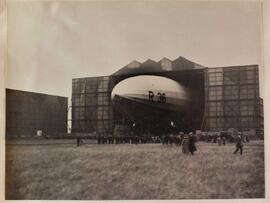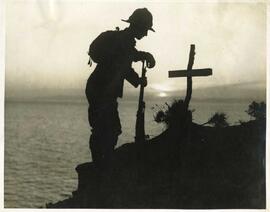BROOKE-POPHAM, ACM Sir Robert (1878-1953)
- BROOKE-POPHAM
- Collection
- 1890-1902
Papers relating to early career, including material on early aviation, 1911-1913, and texts of lectures given at the RAF Staff College, Andover, 1922-1926. Material relating to post as Air Officer Commanding, British Forces in Iraq, 1928-1935, including correspondence, memoranda and telegrams relating to operations in Iraq and Kuwait, 1928-1930, and negotiations for the Anglo-Iraq Treaty, 1930; news cuttings and notes relating to political and military affairs in Iraq, and the situation of the Assyrians and Kurds, 1930-1935. Papers created as Air Officer Commanding in Chief, Air Defence of Great Britain, 1933-1935, mainly relating to a Royal Review of the RAF at Mildenhall, Suffolk, and Duxford, Cambridgeshire. Papers relating to post as Air Officer Commanding in Chief, Middle East, notably memoranda, cypher signals, letters and notes, 1931-1936, relating to RAF operations, mainly planning and preparation for the possibility of war between the League of Nations and Italy following the Italian invasion and annexation of Abyssinia; correspondence with ACM Sir Edward Leonard Ellington, Chief of Air Staff, 1935-1936; memoranda, telegrams, correspondence and newscuttings on operational matters relating to the Arab Rebellion against the British Mandate in Palestine, 1936; material collated by Brooke-Popham for lectures on the Middle East, 1930, 1936; correspondence, memoranda and minutes relating to the formation and working of an Executive Committee on Assyrian Settlement, 1943-1947. Papers relating to the creation and implementation of the Empire Air Training Scheme in Canada and South Africa, 1939-1945, including personal correspondence with Arthur William Street, Permanent Under-Secretary of State for Air, 1940. Papers relating to post as Commander in Chief, Far East, notably telegrams and memoranda relating to the requirements of the RAF and Army in the Far East, 1940-1949; personal correspondence with Maj Gen Sir Hastings Lionel Ismay, Secretary to the Committee of Imperial Defence, 1940-1941; semi-official correspondence with Street, 1940-1941; material relating to the replacement of Brooke-Popham as Commander in Chief, Far East, Nov 1941; telegrams relating to reconnaissance sightings of Japanese convoys, the decision not to launch Operation MATADOR, the outbreak of war with Japan, and the sinking of RN battleships HMS PRINCE OF WALES and HMS REPULSE, Dec 1941; papers, correspondence and proofs relating to the publication of various despatches and reports concerning operations in Malaya, 1941-1947. Papers created whilst Inspector General of the Air Training Corps, 1942-1947, 1950-1952, mainly comprising inspection reports and material relating to the post-war organisation of the Air Training Corps. Booklets, memoranda, and reports collated by Brooke-Popham relating to RAF training, policy and operations, [1914]-1946. Material relating to research for and writing of articles, lectures and pamphlets, mainly relating to history, aviation or training, 1923-1952. Printed material, 1890-1953, mainly relating to aviation. Maps and photographs, 1917-[1945], including aerial photographs of the Western Front during World War One, 1917-1918.
Popham, Sir Henry Robert Moore, Brooke-, 1878-1953, Knight, Air Chief Marshal



